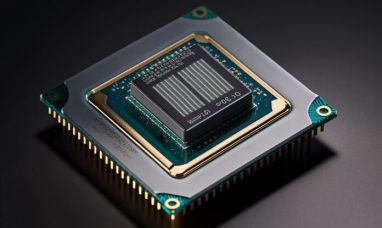Super Micro Computer stock (NASDAQ:SMCI) has been on a rollercoaster ride, recently avoiding a delisting from the Nasdaq Exchange. However, its troubles are far from over. The stock has plunged over 25% in the past week, and concerns about its long-term stability persist. With insider selling and margin pressures, investors must weigh the risks before considering Super Micro Computer stock.
Analyst Raises Concerns About Super Micro Computer Stock
Goldman Sachs analyst Michael Ng has reiterated a neutral stance on Super Micro Computer stock, citing significant challenges ahead. While the company remains a key player in the AI server market, Ng believes it faces obstacles in expanding its profit margins.
One major issue is customer concentration risk. Super Micro Computer relies on a small group of customers for the majority of its revenue. If any of these customers decide to scale back spending or switch to competitors, it could severely impact SMCI’s financial performance. This vulnerability makes Super Micro Computer stock a risky bet, especially as competition in the AI hardware sector intensifies.
Insider Selling Raises Red Flags
Adding to investor concerns, recent insider filings indicate that company executives are offloading shares. Sara Liu, one of the company’s cofounders, has filed a notice with the U.S. Securities and Exchange Commission (SEC) to sell over 46,000 shares of Super Micro Computer stock.
Additionally, George Kao, the company’s Senior Vice President of Operations, is set to sell more than 1.5 times the amount of shares Liu is selling. Insider selling isn’t always a bad sign, but such large sales suggest that key executives might not be optimistic about the stock’s future performance.
A Contrarian View on Super Micro Computer Stock
Despite Goldman Sachs’ concerns and insider selling, not all analysts are bearish on Super Micro Computer stock. The mean price target for SMCI still stands at $53, suggesting potential upside of around 30% from current levels. Some investors see the recent dip as an opportunity to buy the stock at a discount, betting on the company’s long-term prospects in the AI infrastructure sector.
Should You Buy or Avoid Super Micro Computer Stock?
Super Micro Computer stock presents a mixed picture. On one hand, it faces challenges like customer concentration risks, potential margin pressures, and insider selling. On the other hand, some analysts still see upside potential, and the company remains a significant player in the AI server industry.
For investors considering SMCI, it’s essential to weigh the risks carefully. While the stock may rebound, the current warning signs suggest caution. Whether to buy the dip or stay on the sidelines ultimately depends on your risk tolerance and investment horizon.
The Broader AI Market and Super Micro Computer’s Role
The AI boom has fueled demand for high-performance computing solutions, with companies like NVIDIA (NASDAQ:NVDA) and Advanced Micro Devices (NASDAQ:AMD) benefiting from this trend. Super Micro Computer, as a key supplier of AI-optimized server hardware, is well-positioned in this growing sector.
However, competition is heating up. Larger tech firms and emerging AI-focused companies are aggressively expanding their market share, putting pressure on Super Micro Computer to innovate and maintain its competitive edge.
While SMCI could benefit from continued AI infrastructure demand, it must navigate challenges like pricing pressure, supply chain disruptions, and evolving customer needs. Investors should keep a close eye on upcoming earnings reports and management’s strategy for sustaining growth in an increasingly crowded market.
Final Thoughts
Super Micro Computer stock remains a volatile investment with both risks and rewards. While some see its recent dip as a buying opportunity, concerns over insider selling and customer concentration shouldn’t be ignored. Long-term investors should assess whether the company’s AI-driven growth potential outweighs these risks before making a decision.
Featured Image: Freepik









